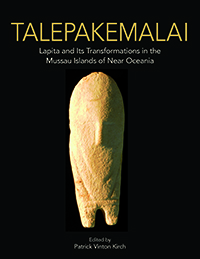At the commencement of the 1985 field season, horizontal metric grid control was established and the site was initially mapped with the aid of a Lietz telescopic level and stadia rod. A datum was established about 20 m south of the landing strip near its eastern end, on the highest part of the paleobeach terrace. A grid system was staked out running out from this datum in four cardinal directions. This main site datum has an elevation of 2.36 m above sea level. All 1-m2 excavation units are designated by the intersection of their east–west and north–south grid numbers (e.g., a unit designated W250N150 would be situated 250 m W and 150 m N of the site datum). Elevation profiles were taken along key transects, correlated to sea level through the use of elevation readings with the aid of a tide chart. For this I used the NOAA tide chart (NOAA 1987), with our tidal information based on Truk Island (Dublon Harbor), applying the necessary temporal and height correction factors stipulated for Emirau (station 3089; NOAA 1987:331).
Excavation proceeded by “natural” stratigraphy, that is, by sedimentary units of deposition. However, when a natural stratum proved to be fairly thick (e.g., more than about 10 cm) it was usually subdivided into two or more levels. The level is thus the minimal unit of vertical control in our excavations. A single level may or may not correspond to a stratigraphic layer, depending upon whether the latter was subdivided into more than one level. However, levels never cross stratigraphic boundaries. The main excavation tool was the Marshalltown trowel, aided by whisk brooms and paintbrushes for fine work. Excavated sediment was transferred to buckets using plastic dustpans, and the bucket contents then sieved (see Recovery Techniques, below). Artifacts found in situ were three-dimensionally plotted; all other materials were provenienced by unit and level, with each lot or item numbered sequentially within each level. Thus the field code ECA/W250N150/6/42 would refer to the forty-second item recovered from level 6 of Unit W250N150 in site ECA. Vertical control was maintained either by recording the depth below surface, bs (from the southwest corner of the unit), or by measuring depth with telescopic level and stadia rod and converting this to depth below site datum. During and after excavation, a photographic record was made using both black-and-white and color 35-mm film. At least one stratigraphic profile of each unit was drawn at 1:10 scale. Layers were described according to a standard set of criteria, including grain size, lithology, color (Munsell system), structure, nature of stratigraphic boundaries, and so forth. Sediment samples were taken from selected stratigraphic profiles for laboratory analyses of grain size and other characteristics. Sediment sampling followed the procedures outlined by Stein (1985, 1987). Certain terms widely used in archaeological parlance nonetheless vary considerably in their definitions, and therefore we wish to be explicit regarding their meaning in this monograph:
Grid Unit (or simply unit): the horizontal unit of control, a 1 x 1 m block. Units may be further specified as test units or transect units.
Level: the vertical unit of control within a unit. Levels never cross natural stratigraphic boundaries, although they may be of artificially defined thickness within natural strata, when it was necessary to subdivide a thick deposit for purposes of vertical control. Levels are numbered with Arabic numerals from top to bottom. (Because our 1985 excavations were undertaken as a part of the Australian-organized Lapita Homeland Project, we fell into the habit of referring to levels as “spits,” using the Old World term common among Australian archaeologists. Our field forms likewise use the term “spit.” In this monograph, however, we exclusively use the American term “level.”)
Layer: a natural sedimentary and depositional stratum, defined in terms of lithology, structure, grain size, color, boundary contacts, and similar criteria. One layer may correspond to one or more levels. Layers are numbered with Roman numerals from top to bottom; facies distinctions within layers are sometimes designated with letters (e.g., Layer IA).
Analytic Zone (or simply zone): an aggregate of levels across two or more units, combined for purposes of analysis and reporting of cultural content. Levels combined into an analytic zone are regarded as being chronologically and stratigraphically equivalent. Analytic zones are
designated with capital letters, from top to bottom; subzones are numbered with numeric subscripts.
